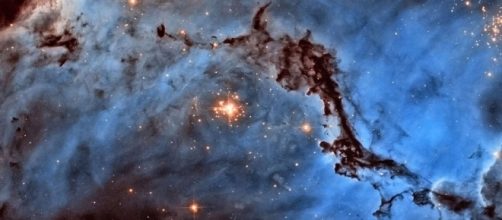This week in space news the Cassini probe studying Saturn makes a surprising discovery, SpaceX does its first big satellite launch for the US military, and soil from Mars can make really strong bricks.
What Cassini discovered
The space probe Cassini has studied Saturn since 2004. It recently started its final mission by going on a series of dives between Saturn and its rings. NASA scientists recently received the data from the first of these dives. They were surprised that the data came back with a whole lot of nothing, showing that the area between Saturn and its inner ring was really empty.
Data from one of Cassini's on-board instruments got converted into audio to listen to dust particles hitting the craft, but almost no evidence of impacts was heard. Scientists expected the gap to be clear of large particles from photos taken of the area, but they expected a lot more dust than what was found.
SpaceX launches first big satellite for US military
On Sunday, Elon Musk's aerospace company SpaceX launched their first national security mission for the United States military. The payload, called NROL-76, was launched from a Falcon 9 rocket at the Kennedy Space Center in Cape Canaveral. Obviously, not much is known about NROL-76, other than the fact that it is a spy satellite for the National Reconnaissance Office.
After the launch of the satellite was a success, the Falcon 9 rocket then had to complete its second stage of landing back on Earth. The 14-foot first stage of the rocket, which is the core area holding the main engines, successfully touched back down at SpaceX's Landing Zone 1. This marked the tenth time the company has successfully recovered a rocket after launch and the fourth time that it has taken place on land.
Mars-like soil makes impressive bricks
In a report published in 'Scientific Reports' a team of NASA-funded researchers from the University of California, San Diego made a surprising discovery using simulated soil from Mars. The team, led by structural engineer Yu Qiao, used soil from Earth that had almost similar chemical and physical properties as soil on Mars.
When the simulated Martian soil was compressed under high pressure it created blocks that were stronger than steel-reinforced concrete. What makes the soil on Mars able to do this is the same thing that gives the planet its unique red color, iron oxide. This is because if iron oxide is crushed with a sufficient force it forms strong bonds that do not need a binding agent. The next step is to see how the bricks hold up at larger sizes.


